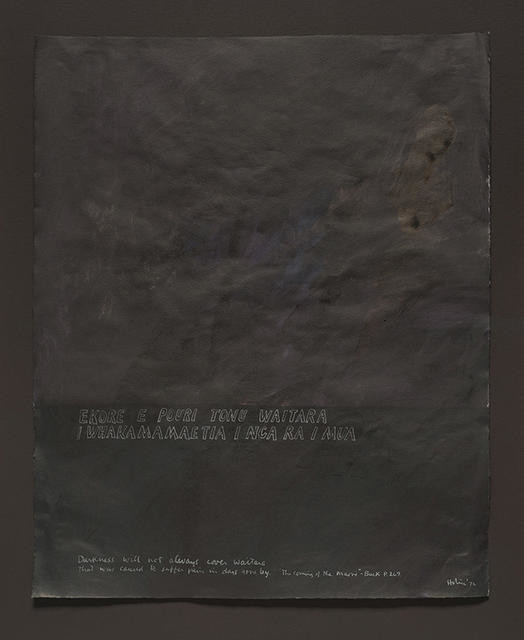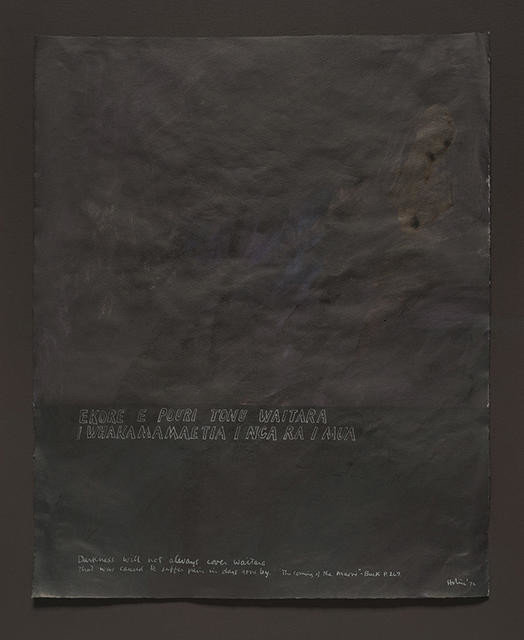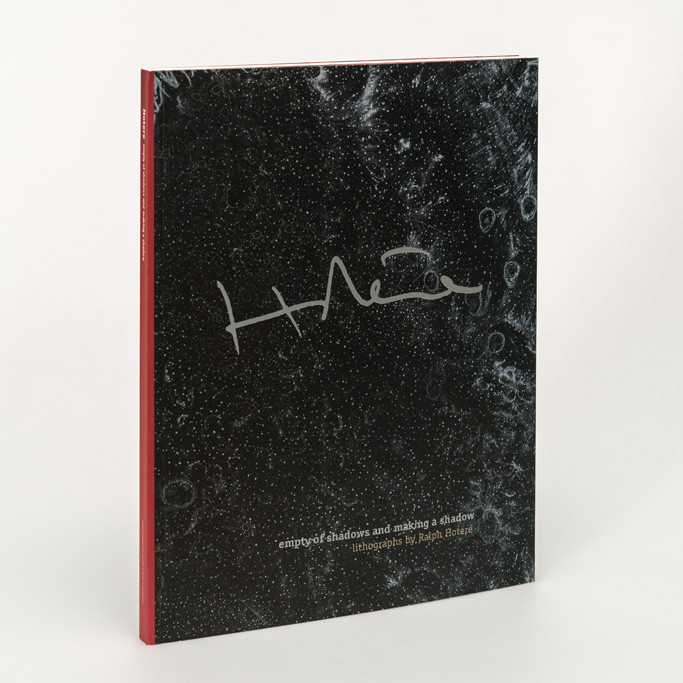Ralph Hotere
Aotearoa New Zealand, b.1931, d.2013
Te Aupōuri,
Muriwhenua,
Māori
Te Whiti drawing-painting
- 1972
- Acrylic and ink on paper
- William A Sutton bequest, 2000
- Reproduced by permission of the Hotere Foundation Trust
- 731 x 528mm
- 2000/22
Tags: abstraction, Māori (culture or style), political art, text (layout feature), words
Ralph Hotere began using text in his paintings during the early 1960s, and it has since become an important element in his work. His ‘Te Whiti Series’ of the early 1970s, which includes text from a wide range of sources, relates to issues surrounding Pakeha confiscation of Māori land. Te Whiti drawing-painting incorporates a Māori lament that refers to the First Taranaki War and the ensuing confiscation of Te Atiawa land at Waitara by the colonial government in 1860. Te Whiti-o-Rongomai was an Atiawa leader and prophet. Hotere (Aupouri) was born in Taikarawa, in Northland. A New Zealand Art Societies’ Fellowship Scholarship in 1961 enabled him to travel to London to study at the Central School of Art. He also travelled extensively throughout Europe. Hotere returned to New Zealand in 1965, and from 1969 was based in Dunedin. His work dealt with environmental issues, politics, poetry, religion, colonialism and racism. In 2003 the Arts Foundation of New Zealand listed him as an inaugural Icon Artist.


